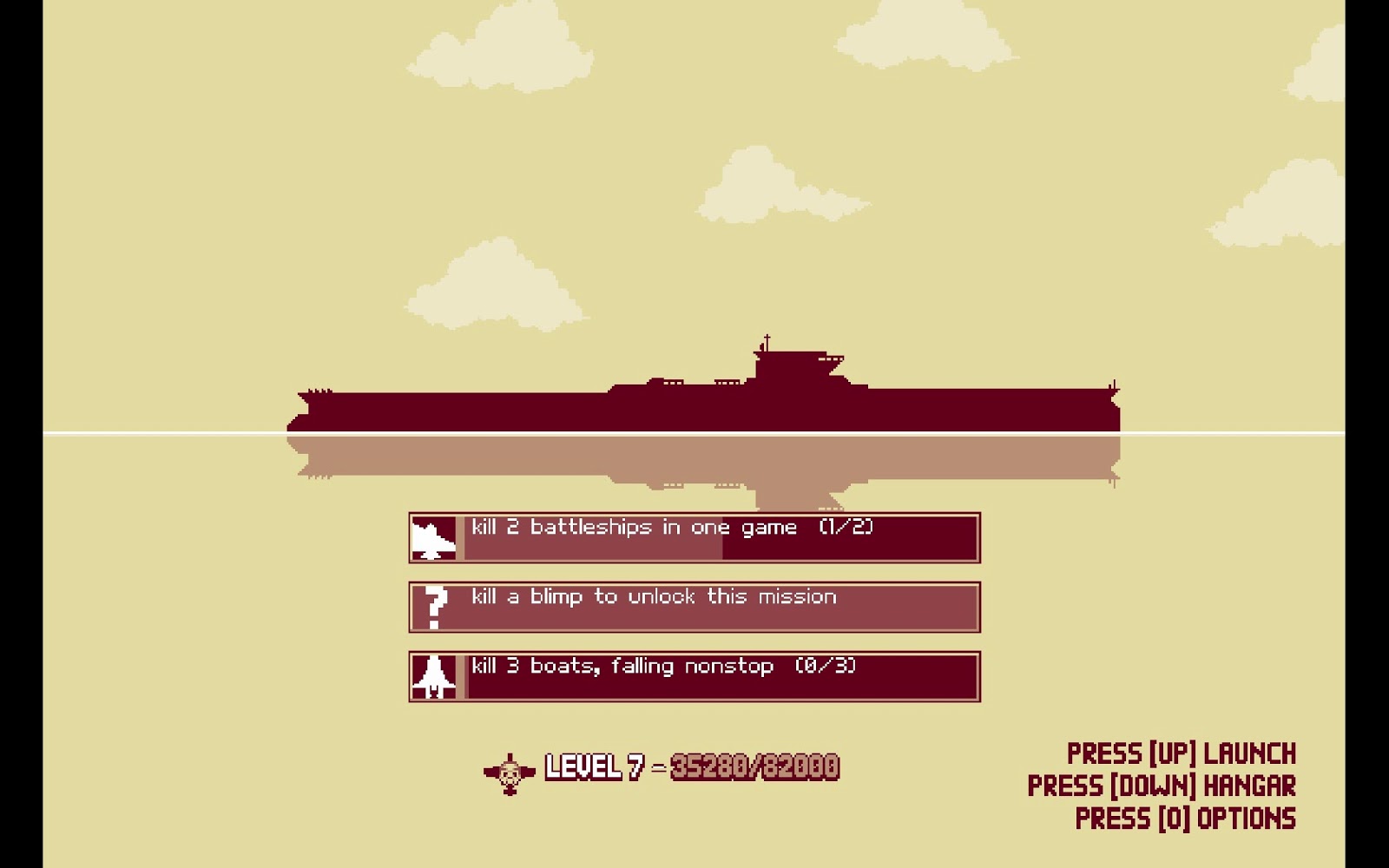The immersion of an epic length game can be very rewarding. Unfortunately life is deeply unfair and we often find ourselves without the dozens of hours and big blocks of uninterrupted time necessary to properly enjoy a mammoth RPG or other all-encompassing experience. What’s a time pressed gamer to do?
We could try free-to-play clickfest Facebook games. We could
also jam burning coals into our ears. As an alternative I offer three very
different games. All three offer real gameplay with the most modest of time
demands.
Crypt of the
Necrodancer combines a simple rhythm game with a top-down, 2D roguelike.
An undead
wizard has stolen your heart (not romantically, the actual organ). As a result
you can only move to the beat of each level’s song. Enemies each have their own
movement and attack patterns controlled by the beat as well. The result is
literal dance-fighting.
 |
| Floor tiles light up to let you know when a beat multiplier is in effect. |
Looted diamonds can be spent after each death to buy a few permanent upgrades or unlock new potential loot. As CotN runs are short and prone to ending violently this offers a nice sense of progression. Unspent diamonds are lost on starting a new run, so unlocking the more expensive items requires you to survive at least a few levels.
Levels are
short, consisting of only a few rooms. Each is unlikely to take more than a few
minutes, even if you pause to dig around for secret items and clear all
enemies. Indeed if you’re still loitering in a level when the song ends you’re
unceremoniously dumped into the next. This does much to keep the pace breezy
and the game moving forward.
 |
| Shopkeepers sing along to the music,. |
Survive a
modest brace of levels and you’re treated to a boss fight. CotN’s bosses are
surprisingly creative and one of the strongest elements. One encounter features
conga lines of zombies controlled by a giant angry ape. Another plays out as a
real-time game of chess, with you battling an entire team of enemy pieces on
your own.
CotN can be
quite challenging. Expect to get trampled by a mob of tough enemies a lot in
later zones before you can acquire a toe-hold of useful items and weapons. Even
with a good weapon and some armor you’re never more than a few missed steps
from death. Since most CotN runs aren’t more than fifteen minutes death isn’t
as punishing as it can be in many roguelikes.
 |
| Later levels can begin with a brutal rush of enemies. |
The soundtrack
is excellent, as one would hope for a game based around rhythm and music. The
songs for the early zones are a bit more thumping, but all are worth listening
to and work for purposes of the game’s core mechanic.
For a game
still technically in alpha Crypt of the Necrodancer plays smoothly and (most
importantly) is tremendous fun. The moment to moment gameplay is great and the
combining of two relatively simple ideas into a whole works beautifully. The
addition of a co-op mode even tentatively pushes CotN into the territory of a
viable party game.
Reasons to
play: Clever core mechanic. Accessible gameplay. Thumping soundtrack.
Reasons to
pass: High difficulty. If you lack a sense of rhythm.
The Fall is a dark,
2d adventure/puzzle game with light combat elements. The premise is unique and
intriguing. You play as ARID, the onboard AI for a suit of advanced combat
armor. You come online literally falling
from orbit towards an unknown planet. Kinetic energy shields narrowly save you
from becoming an impact crater, but your human pilot is worryingly
unresponsive. With nothing else to go on you set out to locate medical aid and
any clue as to what’s going on.
The world you find yourself stranded on is a dark and gloomy
place. The largely subterranean environments are stark, with most things viewed
only in outline. Something bad clearly went down before you got here, judging
by the sheer number of decaying human and robot remains to be found.
 |
| Environments are dank and somber, with spots of color and light standing out all the more. |
Puzzles are generally logical, although you can sometimes
just resort to trial and error. So long as you remember what abilities you’ve
unlocked and what you’re carrying you shouldn’t get stuck for long. Even with
your flashlight beam highlighting critical hotspots in the environment some are
frustratingly hard to spot, and missing these is what held me up more than
anything else.
Combat is sparse and largely trivial. There are basic cover
and even stealth mechanics, but don’t come into The Fall expecting a true Metroid-like experience. The brief action
sequences still make a nice pallet cleanser between the more dialog and puzzle
heavy sections of the game.
 |
| Opportunities to stealth-kill enemy bots are rare, but do exist. |
One of the core themes of the game is that ARID is locked out
of most of the combat suit’s functions. As a work around she can over-ride
these locks if she needs a particular function to preserve the life of her
pilot. Perversely you quickly discover that, to unlock new abilities, progress
through the game, and ultimately save your pilot, you must constantly,
deliberately put ARID and her pilot in mortal danger.
The logical gymnastics this puts ARID though contributes
heavily to her character development. To fulfill her programming, she’s forced
to blatantly violate it. This occasionally taps into a streak of subtle but
potent dark humor as ARID takes the most direct and destructive route through
the arbitrary and absurd tasks other characters throw in her way.
 |
| ARID may be military hardware, but she is more than a mere machine. |
While the game’s puzzles are functional it is the characters
and dialog that make up The Fall’s
strongest element. With no living humans about (aside from ARID’s
uncommunicative pilot) the cast consists entirely of robots and other
Artificial Intelligences. Far from being written as just metallic people their
actions are often inhuman and un-nerving from the point of view of a more
meat-based sentience.
A critically damaged fellow combat suit mildly agrees ARID
should cannibalize it for parts, since she has a greater chance of surviving.
This isn’t presented as an act of noble self-sacrifice by either party, but
just the logic thing to do. Even something as basic as gender identity is difficult
to apply. While the combat suit has a clearly male physique it’s impossible to
think of ARID as anything other than female after hearing her speak.
In keeping with our theme The
Fall is a short game. Unless you get seriously stuck it’s unlikely to run
you more than 3-4 hours. The story concludes with a somewhat unsatisfying
ending that leaves a lot of questions unresolved, but The Fall is only part one of an intended trilogy.
Reasons to Play: Foreboding atmosphere. Satisfying, logical
puzzles. Intriguing set up and characters.
Reasons to Pass: Short play time. As act One of Three, raises
more questions than it answers. Awkward but trivial combat.
Luftrausers is a 2-D
side-scrolling shooter with an old-school arcade vibe. There’s no real campaign,
story, or linear missions. Just endless waves of enemies over a featureless
ocean, a high score to chase, and a few progression systems.
Death is merely an excuse to try again. When inevitably shot
down by the bullet-hell like spread of enemy fire you can be back in the air with
a new plane configuration in seconds. The only true penalty for destruction is
losing your combo multiplier and shot at a new high score.
 |
| Battleships require concentrated fire to sink and fill the sky with projectiles. |
A constant stream of kills is necessary to build the combo multiplier
and get a worthwhile score. Basic strategy encourages building the multiplier
on swarming small planes before trying to tackle a high value target. Conversely
you only repair damage when not firing, which is not conducive to racking up
kills. Walking the razors edge between keeping your combo going and staying in
the air makes for frantic second to second gameplay.
Each launch challenges you further with a brace of
quantifiable mini-objectives that do much to keep gameplay from growing
monotonous. These missions provide a sense of accomplishment and progression
and often encourage new styles of play. An easy mission might task you with
simply downing a certain number of enemy planes in a single life. A more
challenging one might require sinking a battleship while on fire or while in
free-fall.
 |
| Short term missions add additional challenge to the arcade action. |
Accomplishing these mini-missions and racking up sizable
combos contributes towards unlocking new engines, hulls, and weapons. These
parts can be freely mixed and matched, allowing for some fascinating
combinations with truly unique kinds of play. One configuration might boost
your armor and render you immune to collision damage, making it more practical
to ram enemies than to shoot them. Another might let you dart out of the ocean
to sweep the skies with a laser beam before sinking back safely below the
waves.
No one weapon or configuration excels at fighting every enemy
type. Much of Luftrauser’s appeal
comes from experimenting with different parts and learning how to exploit each
combination’s strengths and weaknesses. Some might lend themselves to a
particular playstyle more than others, but all are fun to try.
 |
| As you unlock new parts dozens of configurations become available. |
A suitably martial soundtrack enhances the action. The music
actually changes slightly depending on your plane configuration, which provides
another convenient excuse to experiment with all the combinations.
Luftrausers makes for
an ideal five-minute break game. The frantic core action combines well with the
parts and missions systems to add welcome variety and a sense of progression.
Reasons to play: Well tuned arcade action. Swappable plane
configurations offer depth and variety.
Reasons to pass: High difficulty. Short, repetitive core
gameplay.
Articles copyright James Cousar, games and images copyright their respective owners.


